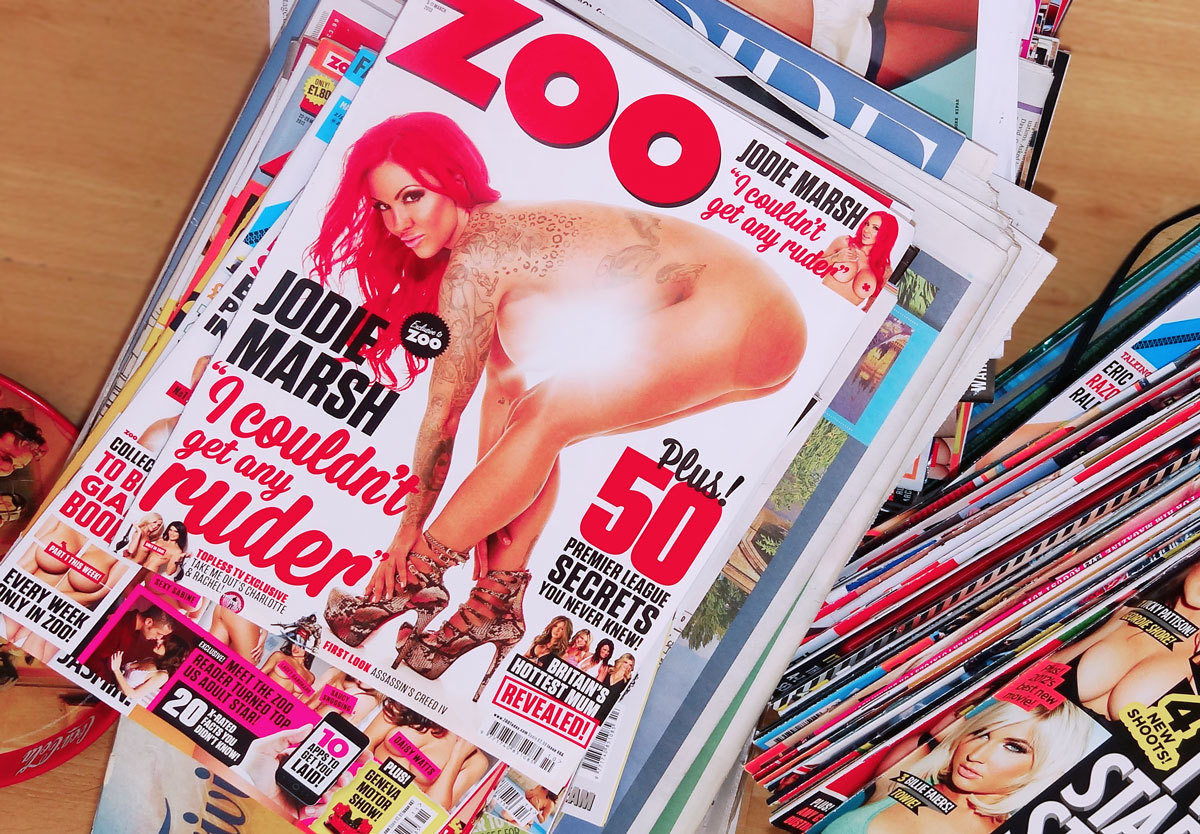Last week, the media announced that ‘lad culture’ mags FHM and Zoo are respectfully calling it a day, bowing out and ceasing production by the end of the year. Both magazines — run by publishing giant Bauer Media — targeted the male consumer with a mix of smutty content, thinly veiled banter and, yes, scantily clad and often naked women. But the modern man is a different, more complex beast from the one who prowled the streets 20 years ago when EMAP bought For Him Magazine and turned it into FHM.
They may have differed slightly in tone, but both magazine’s reinforced the age-old stereotype that all men love boobs, football, cars, explosions and exciting stuff like guns and fighting. But evidently, in society’s shifting social attitudes, cultural interests and gender specifics are changing to show that this tired view is what’s redundant. Men don’t want to read about Dapper Laughs and fart jokes in a paid-for magazine. Modern life has moved most men a world away from Zoo’s generalised stereotypes.
Zoo and FHM were the last dying strongholds of the mainstream media’s indulge of this ideology, the internet has now taken over the format’s function. Bauer Media’s spokesperson echoed this when they commented “…men’s media habits have continually moved towards mobile and social.” The internet is full of loose, poor-journalism and cheap banter — the publications mirroring this have become a waste of paper, why would anyone pay for it in a magazine when anyone can see it for free?
On the flip, sites like 65Twenty, BuzzFeed, The Daily Mail and the ubiquitous LADBible — the latter being ranked 12th most visited site in the UK — have all gained notoriety and proved there is a market for this type of content, rehashing daily articles that look at ‘the top 10 balding footballers’, ‘the best fake boobs’ or ‘The 20 biggest shoot out scenes in film’. Even more detrimental to the lad’s mag has been the fact that there’s an awful lot of pornography lurking away on the internet. So much, in fact, that looking at a naked woman in a magazine that you bought in a brown-paper bag doesn’t have the same frisson it used too. The first publication to understand this changing role and need of the male, and take the plunge in changing their stance and tone was the mother of all eyebrow-raising men’s magazines: Playboy.
For Playboy magazine, shifting their image from hedonistic voyeurism to one of the most aloof ‘journals’ available has seen their stats increase ten-fold. In 2014, Playboy announced that they’d cease to publish full frontal nude photo shoots in their magazines, with more articles covering culture, entertainment and health. Some of contemporary culture’s greatest writers – Jack Kerouac, Noam Chomsky and dozens more – had their work printed in the original lad’s mag when their fledgling careers were taking off. Nowadays, that old chestnut of “I read Playboy for their articles, not the other stuff” is a totally valid excuse.
If you want to read about the sociological-effects of a conflict, how to impress your date or wider cultural pieces such as the gay clubbing scene, then Playboy is for you. You’ll have to go elsewhere for flesh, pint balancing tricks, horrifying images of work place accidents and pyromaniac explosions. The printed page is expensive to create and the advertising profit-revenues are getting slimmer by the month, so there’s more need to reflect current male trends. As a result, Playboy’s readership leapt from 5.5 million users to a staggering 21.5 million recorded in the 6 months leading into January 2015. Their focus on premium content for the modern male, inside a shop-sold medium, has helped to define the brand as an intelligent source, while the more titling content can be left to the internet and it’s hungry consumers.
The lure and appeal of glossy girls and the instant gratification of sexual escapades is no-longer edgy or subversive, rather a barrage of trash-reading that’s available to all (not just the boys club). The lads mags version of ‘edginess’ was the core ingredient of the format from day zero. And now their primary function is all but redundant as printed media – and its demographic – drift from the lowest-common-denominator in search of something else.
It’s the demands for information as distinctions of gender identity morph – plus the internet covertly extracting the magazines’ revenue money – that are responsible for making this most gender specific of formats redundant. No matter the context, money drives business and sex sells units, every time. And now the format is online and free, human nature can lap up as much as it can possibly stomach – we’ll now use the money to learn how to expand ourselves as open-minded men.
Credits
Text Joe Gamp
Photography Ben Sutherland
